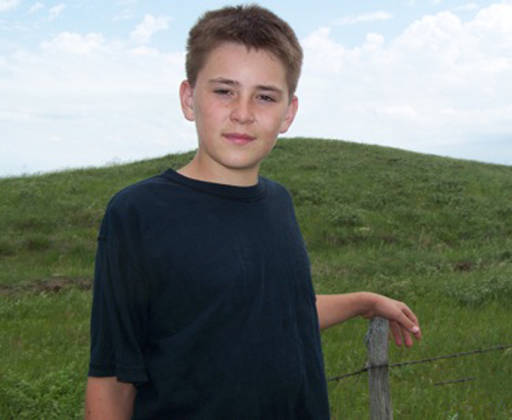
A Custer County 4-H member is taking advantage of an unused section of land by turning it into a habitat for prairie chickens.
Russell McMillan, age 13, will be an eighth- grader in the fall at Anselmo-Merna.
He has been working on the project for three years and placed first in two junior division competitions in 2011 and 2012.
"When my parents purchased some land I was then able to try a wildlife project," McMillan said.
With the help of his family, McMillan has cut down scattered trees that harbor predator birds on his 52-acre plot. He then burned the brush piles so that other predators could not live there and planted wildflowers in the void.
McMillan has been working with Larkin Powell, a professor in the University of Nebraska-Lincoln's School of Natural Resources.
"We saw a magazine article and saw at the bottom who wrote it," McMillan said. "We contacted him to ask him some more ideas."
Powell said that McMillan had done a good job with his habitat, but that he did have some suggestions.
"I told him that if he could do anything to increase the amount of wildflowers in the pastures that it would provide insects for the chicks," Powell said.
Prairie chickens need different types of land for nesting, booming and raising chicks. Booming refers to a mating ritual male chickens perform in which they inflate air sacs on the side of their necks and snap their tails to attract a female. The chickens need areas with shorter grasses for this purpose.
"His project is probably more focused on raising the chicks," said Lisa McMillan, Russell's mother. "It is pretty diverse with many kinds of vegetation."
The McMillan family grazes cattle on the land so the chickens can have shorter grass suitable for raising chicks.
Lisa McMillan said her son chose to work with prairie chickens because they are common in his area.
"I said we've got to work with what we have and what we have is prairie chickens," Lisa McMillan said.
Colby Kerber, a regional biologist, went to the site of McMillan's project and judged it for the competition.
"The biggest thing that stood out about Russell's project was his intelligence on the project," Kerber said. "We asked them some pretty detailed questions and he was very good with the responses to the questions."
Powell said that he has enjoyed his contact with Russell via email and hopes to see his project in person.
"He seems like he is a very inquisitive young lad and it's always very interesting to get requests like this," Powell said. "The emails we get are what keep you doing what you are doing. It is just neat to see a 13-year-old 4-H'er that is that interested in conserving wildlife."